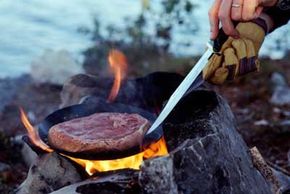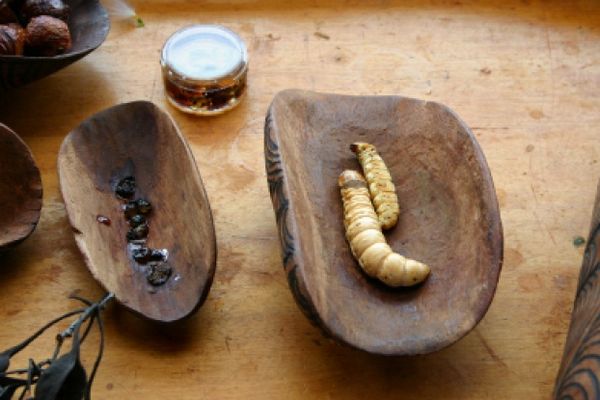Stranded in the wilderness for days, your stomach audibly groans from hunger. Foraging on plants or berries isn't an option because you don't know what's safe to eat. Instead, you hunt.
Drawing on your dwindling energy, you manage to kill a rabbit. Now, the only thing that matters is getting that sustenance into your body fast. Building a fire and cooking could take more than an hour, so you contemplate eating it raw. What's the harm?
Advertisement
Not so fast. Sure -- in the wilderness, some normal rules of civilization don't apply. But when it comes to meat, you need heat. If you want to maximize your chance of survival, the U.S. Armed Forces Survival Guide recommends cooking all wild game and freshwater fish because of the threat of bacteria or parasites.
Bacteria thrive and multiply between 40 and 140 degrees Fahrenheit (4 and 60 degrees Celsius). That's why you should cook meat until the internal temperature measures at least 150 degrees Fahrenheit (65 degrees Celsius) to effectively break down the bacteria cells and prevent them from reproducing [source: USDA].
You're probably thinking: If that's true, then how have Eskimos and other indigenous groups survived eating raw fish meat over the years? And what about eating raw fish in dishes such as sushi?
The difference is the salt water and the temperature of the meat. Saltwater fish are safer to eat raw because the water actually helps to kill parasites and bacteria. The salt in the water creates a hypertonic solution, where a higher concentration of salute (salt) exists outside of the bacteria cells than inside those cells. To correct that imbalance, the bacteria cells release their water content through osmosis. When they lose that water, they shrivel up and die. In addition, when Eskimos eat raw whale and seal meat fresh, it hasn't had time to breed more bacteria.
Cold temperatures below 40 degrees Fahrenheit (4 degrees Celsius) also stop bacteria reproduction. Sushi-grade fish, called sashimi, that people commonly eat raw has been frozen before use to help destroy any remaining bacteria. In case of any lingering invaders, food safety guides do recommend heating all saltwater fish to more than 140 degrees Fahrenheit (60 degrees Celsius).
Are these cooking precautions merely empty threats? Next up, we'll take the microscope to the meat and see what potential dangers exist.
Advertisement
















